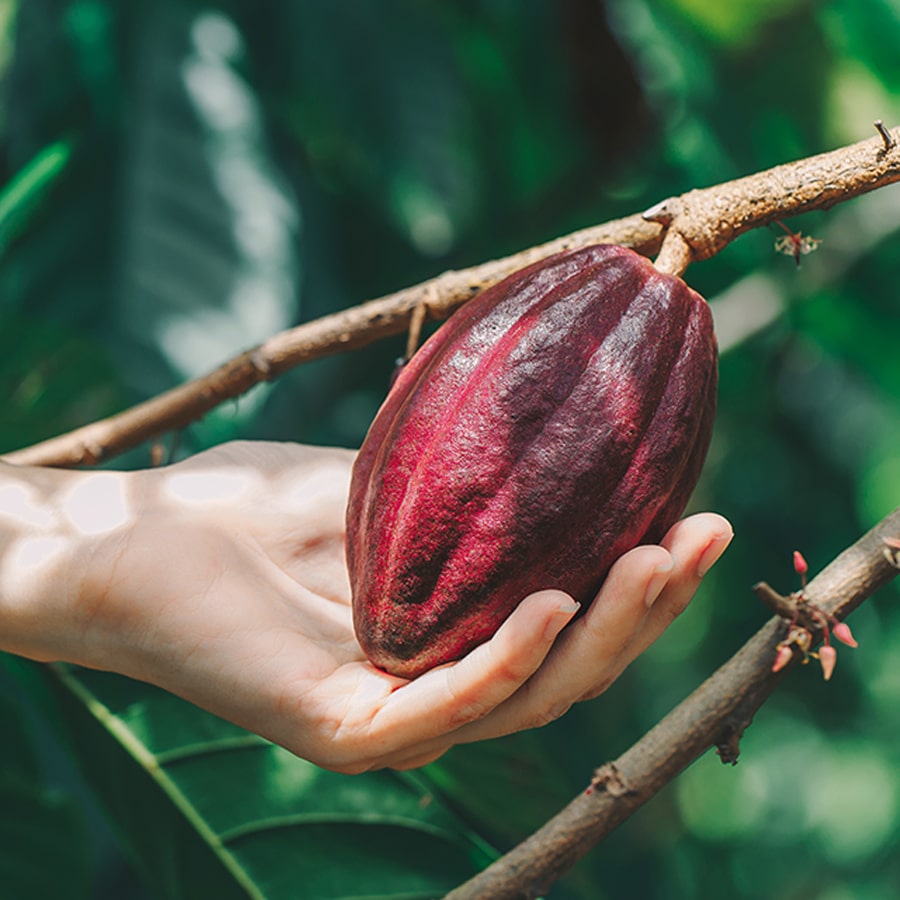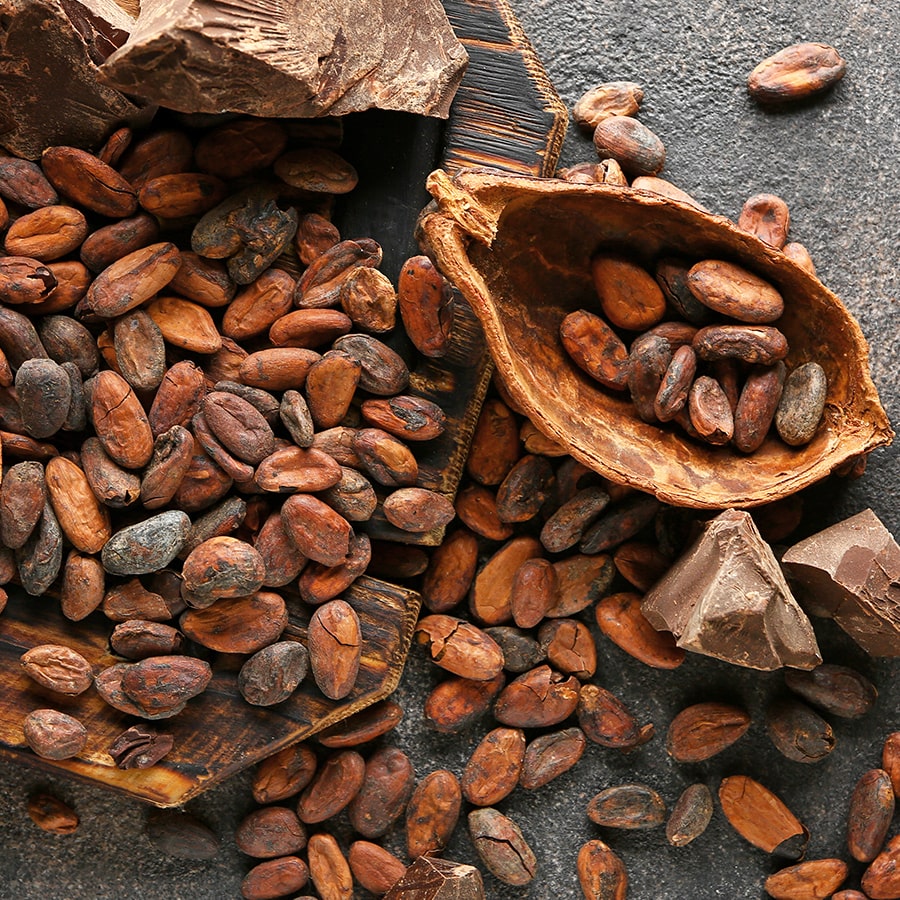History of cocoa and chocolate
It’s hard to name a more indulging sensory experience than the one that chocolate provides. There are very few experiences as refined as the one that a chocolate piece creates while melting in your mouth. But chocolate was not always so sweet, delicate and smooth, it was not even used as food at first.
It’s unclear exactly when cacao came on the scene. According to the data from the National Museum of the American Indian, ancient Olmec pots and vessels from around 1500 BC were discovered with traces of theobromine, the stimulative compound found in chocolate and tea. According to one theory, the Olmecs would crush the cacao beans, mix them with water and add various spices, consuming it as a drink. They began cultivating cacao in equatorial Mexico. Over time, the Mayans (600 AD) and the Aztecs (400 AD) developed successful methods for cultivating cacao as well. It is assumed that the word ”chocolate” may even come from here, and etymologists have linked it to the Aztec word “xocoatl”, a bitter drink that these ancient civilizations made from cacao beans.
The arrival of chocolate in Europe
There are conflicting reports about when chocolate arrived in Europe, although it’s agreed it first arrived in Spain. One story says Christopher Columbus discovered cacao beans after intercepting a trade ship on a journey to America and bringing the beans back to Spain with him in 1502. Another story states that Spanish conquistador Hernan Cortes was introduced to chocolate by the Aztecs of Montezuma’s court. After returning to Spain, with cacao beans in tow, he supposedly kept his chocolate knowledge as a well-guarded secret. A third story claims that friars who presented Guatemalan Mayans to Philip II of Spain in 1544 also brought cacao beans along, as a gift. However, chocolate became very popular among the Spanish, who kept the method of production a secret from other Europeans for almost 100 years and adapted it to their own taste, adding cane sugar, vanilla, cinnamon and pepper to sweeten the bitter cocoa. As the secret could not last forever, chocolate quickly spread throughout the rest of Western Europe. Chocolate – then still exclusively in the form of a drink – appeared in France and then in England, at royal courts and special “chocolate houses” that served exclusively the social elite.

Commercialization of cocoa
16th century
In 1585, the first shipment of cocoa beans arrived in Spain, marking the beginning of the cocoa bean trade with Central America. Then followed the opening of the first chocolate shops and the growing demand for the product of the new world. With the high demand, large cocoa plantations emerged, where thousands of slaves worked. The Europeans were not fully satisfied with the taste of the traditional Aztec drink, they experimented by adding different spices and making varieties of “hot chocolate”. Soon, modern chocolate houses appeared in London, Paris, Amsterdam and other European cities, reserved exclusively for the privileged group of the population.

Industrial revolution
1700-1900
Until the Industrial Revolution, for over 2,500 years, chocolate was a drink for the elite, both in making and serving. For both, expensive and rare equipment and accessories were necessary. However, the exclusivity of chocolate was reduced by the beginning of the industrial revolution, more precisely in 1828 when van Houten invented a hydraulic cocoa press that squeezed out cocoa butter and left behind cocoa powder. This process became known as “Dutch processing” and the resulting cocoa powder “Dutch cocoa”. Since then, the production of cocoa powder has become much faster and more affordable. In 1847, Joseph Storrs Fry made another important discovery that advanced the mass production of chocolate. He mixed cocoa powder and sugar with melted cocoa butter, producing a solid mass that could be poured into a mould. Innovations continued in 1876 when the Swiss Daniel Peter added powdered milk to his recipe, creating the first milk chocolate. During the same period, Rodolphe Lindt developed the chocolate fondant – so called chocolate that melts in the mouth. As chocolate became more affordable and widely available, many chocolate products appeared on the market: pralines, filled chocolates, with liqueur, fondant, dried fruit, chocolate powder, glazes, spreads, hard candies, soft drinks and many others.

Modern era
1900
During its centuries-long evolution, cocoa has had a turbulent history and experienced many changes, except one – many devotees around the planet. Since the 20th century, the world has become obsessed with chocolate. Today, over 4.5 million tons of cocoa beans are consumed worldwide annually, from beverages to sweets. Every year the world consumes 3 billion kilograms of chocolate. In order for the future of chocolate to be secure and equally accessible to generations to come, it is necessary to apply sustainable agricultural practices with a focus on ethically grown ingredients, which is becoming extremely important for consumers. There is a real threat that chocolate will become a rare treat again in the future, as the cocoa industry faces major challenges such as climate change, diseases, deforestation, and the inadequate income that most cocoa farmers currently receive. This situation must change, it is necessary to increase the productivity of farmers, improve their living conditions, protect children and preserve forests.